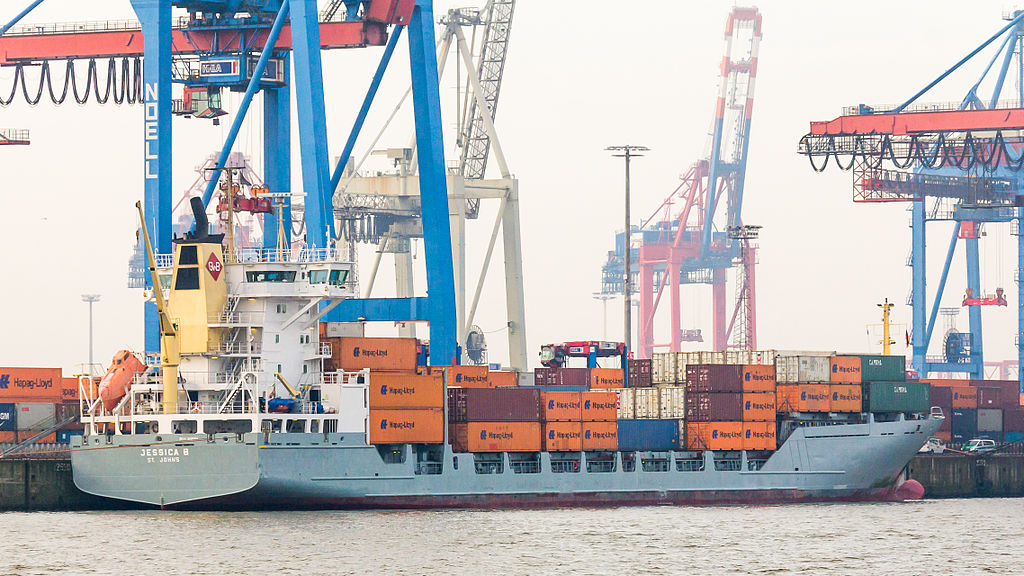Germany's exports increased by 2.9% in December, defying economists' expectations of a 0.6% decline, according to the federal statistics office. However, for 2024, exports fell by 1.0% due to weak demand from China, following another contraction in 2023. Imports dropped 2.8%, with the foreign trade surplus reaching €241.2 billion.
Despite the December boost, Germany’s economy remained under pressure from high energy costs, tight monetary policy, and geopolitical uncertainties. The government predicts exports will decline another 0.3% in 2025, marking a third consecutive year of contraction. The BDI industry association warned that potential tariff threats from Donald Trump’s administration could shrink Germany’s export-driven economy by 0.5% next year.
Exports to EU nations rose 5.9% in December, while non-EU exports dropped 0.5%. Imports increased 2.1% compared to November, bringing the monthly trade surplus to €20.7 billion, up from €19.2 billion.
Meanwhile, German industrial production declined by 2.4% in December, exceeding analysts’ expectations of a 0.6% drop. Revised data showed a 1.3% rise in November, slightly lower than previously reported. Industrial production remains 10% below pre-pandemic levels, with experts warning of continued stagnation.
Large-scale orders, including aircraft and military vehicles, drove a 6.9% increase in industrial orders. However, weak business sentiment, rising natural gas prices, and structural challenges suggest prolonged difficulties for Germany’s manufacturing sector. While auto production may see short-term recovery and lower interest rates could support investments, analysts anticipate further industrial decline.



 Global Markets Slide as Tech Stocks Sink, Yields Rise, and AI Concerns Deepen
Global Markets Slide as Tech Stocks Sink, Yields Rise, and AI Concerns Deepen  Gold and Silver Prices Dip as Markets Await Key U.S. Economic Data
Gold and Silver Prices Dip as Markets Await Key U.S. Economic Data  S&P 500 Slides as AI Chip Stocks Tumble, Cooling Tech Rally
S&P 500 Slides as AI Chip Stocks Tumble, Cooling Tech Rally  Asian Currencies Trade Sideways as Dollar Weakens Ahead of Key U.S. Data
Asian Currencies Trade Sideways as Dollar Weakens Ahead of Key U.S. Data  Bank of Korea Downplays Liquidity’s Role in Weak Won and Housing Price Surge
Bank of Korea Downplays Liquidity’s Role in Weak Won and Housing Price Surge  Wall Street Futures Slip as Tech Stocks Struggle Ahead of Key US Economic Data
Wall Street Futures Slip as Tech Stocks Struggle Ahead of Key US Economic Data  Ireland Limits Planned Trade Ban on Israeli Settlements to Goods Only
Ireland Limits Planned Trade Ban on Israeli Settlements to Goods Only  Australian Consumer Sentiment Slumps in Early December as Inflation Fears Resurface
Australian Consumer Sentiment Slumps in Early December as Inflation Fears Resurface  Gold Prices Slip Slightly in Asia as Silver Nears Record Highs on Dovish Fed Outlook
Gold Prices Slip Slightly in Asia as Silver Nears Record Highs on Dovish Fed Outlook  Japan Business Sentiment Hits Four-Year High, Boosting Expectations of BOJ Rate Hike
Japan Business Sentiment Hits Four-Year High, Boosting Expectations of BOJ Rate Hike  Fed Near Neutral Signals Caution Ahead, Shifting Focus to Fixed Income in 2026
Fed Near Neutral Signals Caution Ahead, Shifting Focus to Fixed Income in 2026  Asian Stocks Slide as AI Valuation Fears and BOJ Uncertainty Weigh on Markets
Asian Stocks Slide as AI Valuation Fears and BOJ Uncertainty Weigh on Markets  Dollar Struggles as Markets Eye Key Central Bank Decisions and Global Rate Outlooks
Dollar Struggles as Markets Eye Key Central Bank Decisions and Global Rate Outlooks  China’s Small Bank Consolidation Struggles as Profits Fall and Risks Persist
China’s Small Bank Consolidation Struggles as Profits Fall and Risks Persist  Korea Zinc Plans $6.78 Billion U.S. Smelter Investment With Government Partnership
Korea Zinc Plans $6.78 Billion U.S. Smelter Investment With Government Partnership 






























